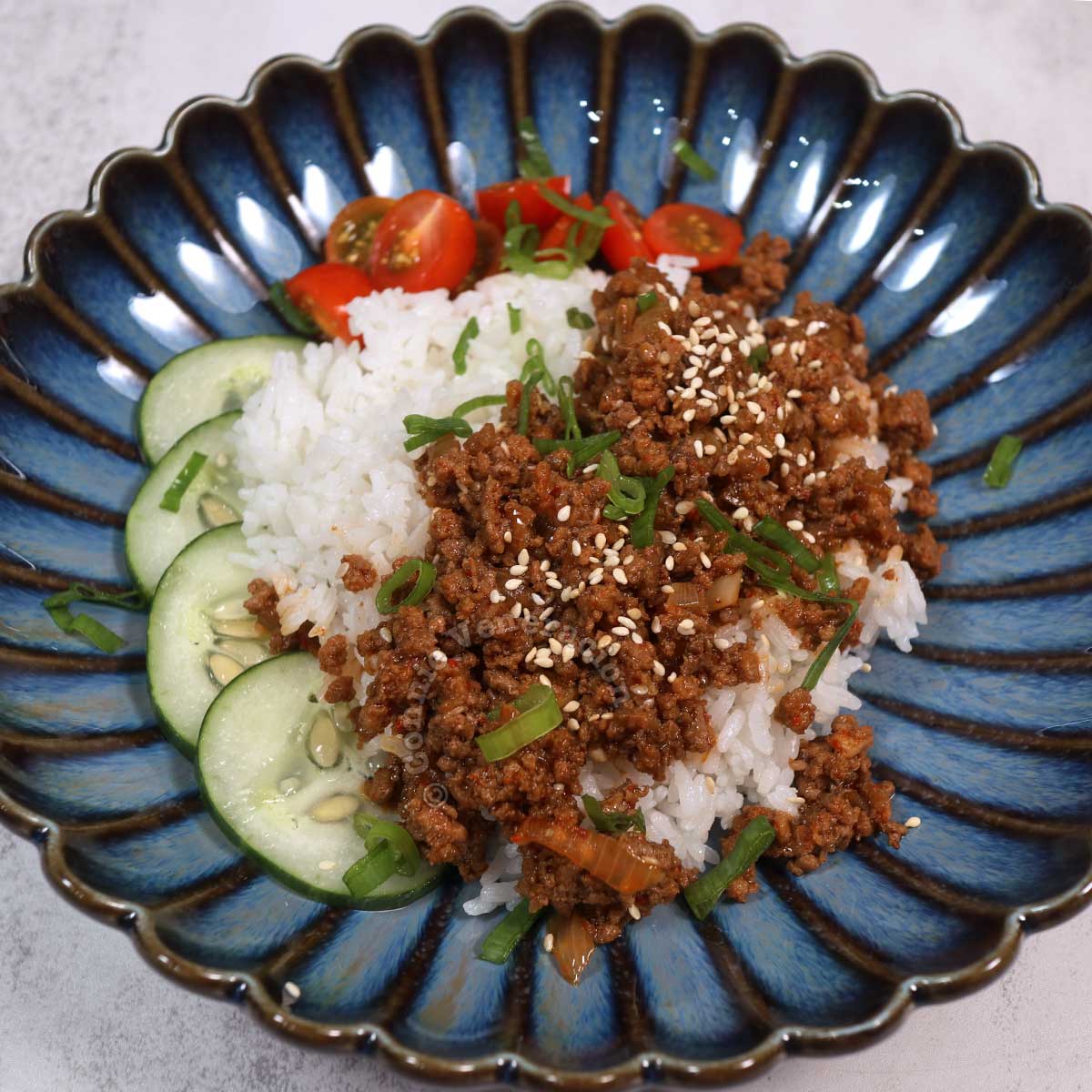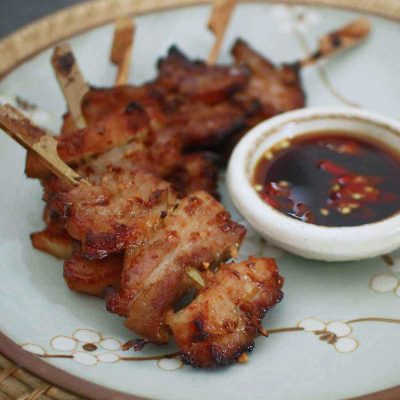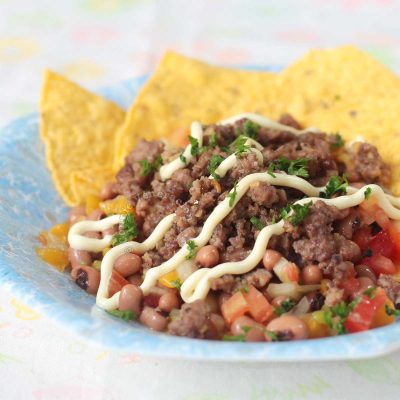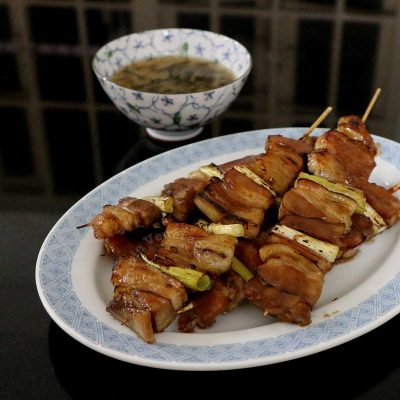The dish is really a modification of Korean bulgogi. The seasonings and garnish are the same. But, instead of grilling marinated slices of meat, the marinade is poured over browned ground beef. The liquid and solids cook together until the meat has soaked up the dark sauce.
Why choose ground beef over beef slices? Well, for starters, there’s no need to marinate. And that means you save time. If you need a second reason, ground beef is much less expensive than sliced premium beef.
A third reason? The cooking method is so much simpler. Instead of placing a tabletop grill on the dining table, providing chopsticks and tongs so that everyone can do their own grilling (which can be messy, I tell you), you just need one pan and a serving bowl. Less utensils used means easier cleanup after the meal.
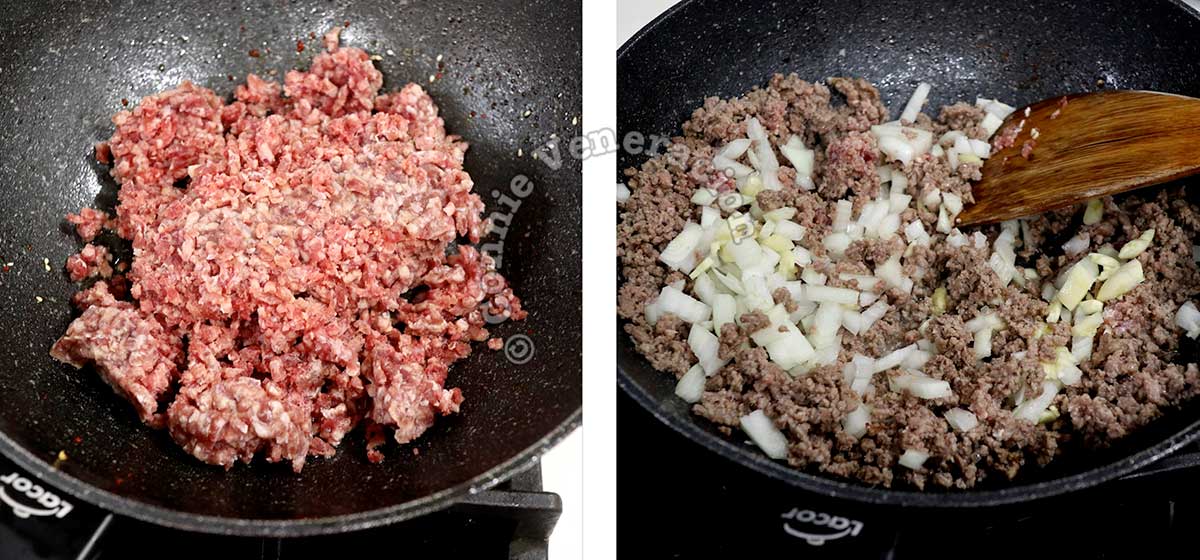
Coat the cooking surface of a wok with oil. You can skip this if your beef is really fatty which means the meat can brown in rendered fat. You cook the beef until browned, add chopped onion and continue cooking until the onion pieces have softened.
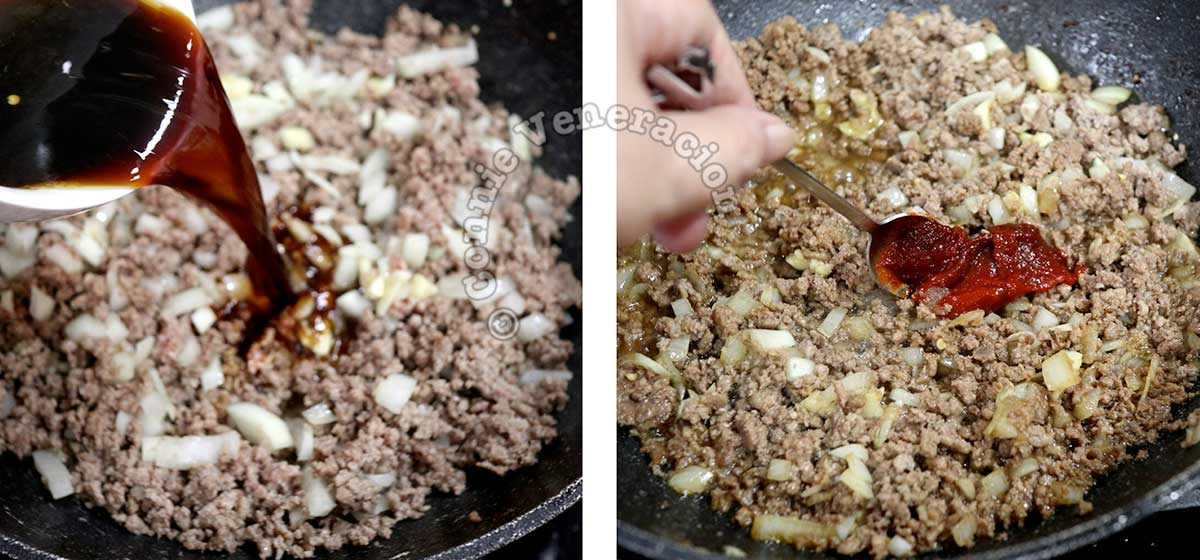
Now the bulgogi sauce. Mix together grated ginger, soy sauce, rice wine, sugar and Worcestershire sauce and pour into the pan with the browned beef. To give the meat that signature Korean heat, you stir in gochujang. Cook until the sauces have been soaked up by the meat.
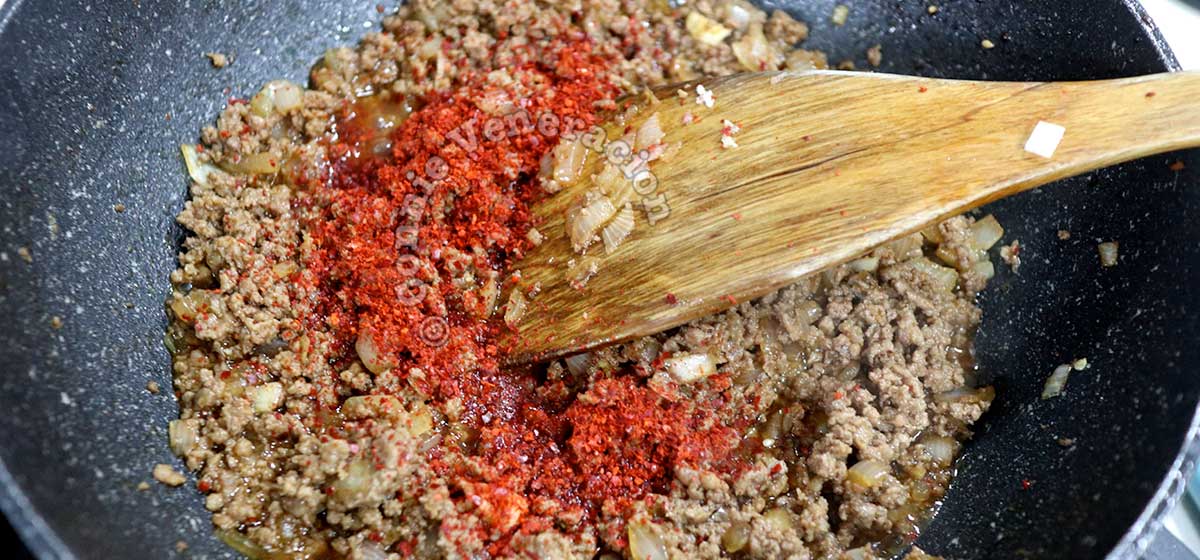
Before serving, two ingredients are added to give the beef more flavor, better aroma and a brighter color. Sesame seed oil and chili flakes. Korean chili flakes are more sweet than hot so, no, we’re not adding more fiery heat to the beef with the garnish.
Korean-style ground beef rice bowl
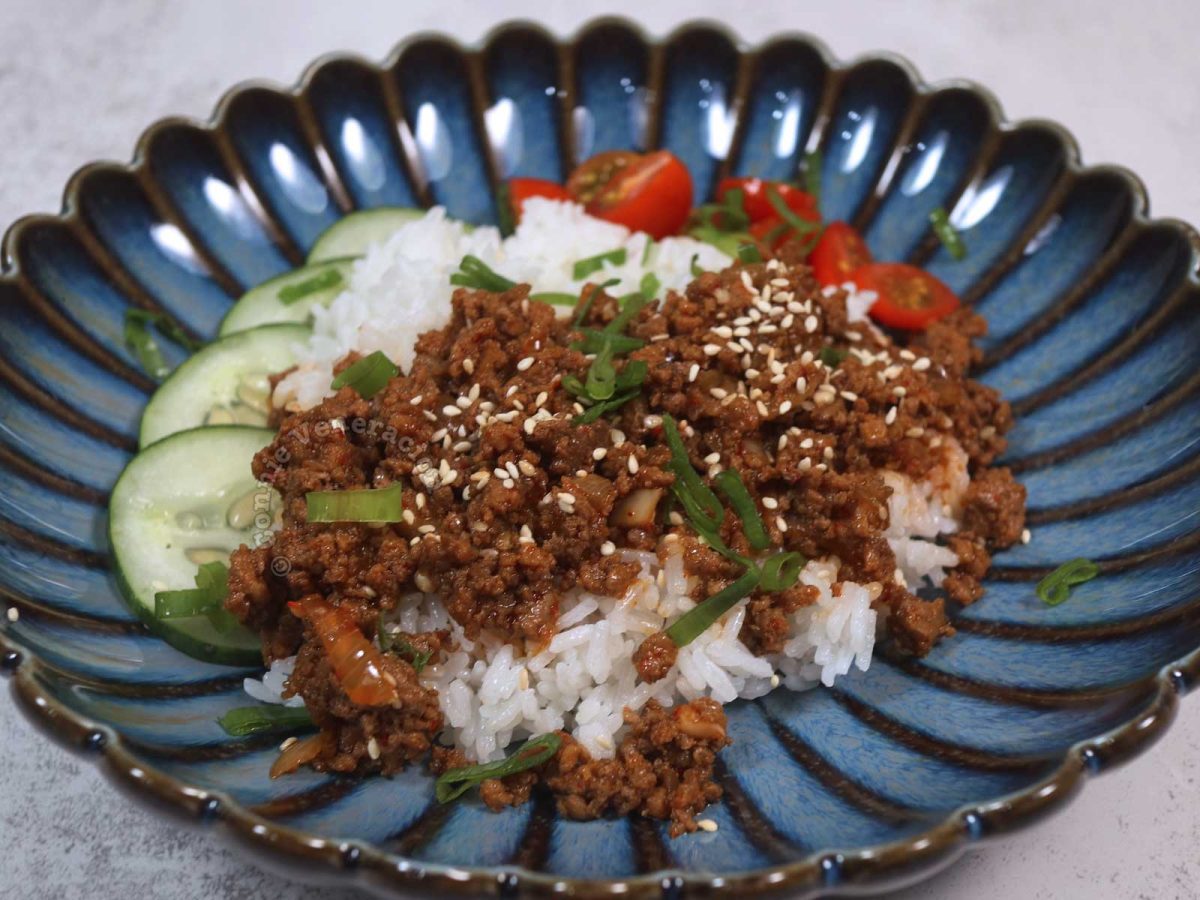
Ingredients
- 1 tablespoon cooking oil
- 500 grams ground beef
- 1 onion peeled and roughly chopped
- 4 cloves garlic peeled and chopped
Seasoning
- 1 thumb-sized piece ginger peeled and grated
- ¼ cup soy sauce
- ¼ cup rice wine
- 1 tablespoon white sugar
- 2 tablespoons Worcestershire sauce (Japanese Bulldog brand was used here)
- 1 heaping teaspoon gochujang (Korean chili paste)
- ½ teaspoon sesame seed oil
- 1 tablespoon Korean chili flakes
Garnish
- sliced scallions
- toasted sesame seeds
Instructions
Brown the meat
- Heat the cooking oil in a frying pan. Swirl to coat the entire bottom.
- Spread the ground beef in the hot oil, leave to brown the underside for a minute of so, then stir to break up lumps. Cook, stirring, until lightly browned all over.
- Add the chopped onion and garlic. Cook, stirring occasionally, until the onion pieces are softened and appear translucent.
Season the meat
- In a small bowl, mix together the grated ginger, soy sauce, rice wine, sugar and Worcestershire sauce.
- Pour the mixture over the browned ground beef and cook, stirring often, until the liquid has been soaked up by the meat.
- Stir in the gochujang and cook until fully incorporated.
Add finishing touches
- Off the heat, drizzle in the sesame seed oil and sprinkle in the chili flakes.
- Toss until the coloring looks uniform.
- Serve your Korean ground beef over rice. Garnish with sliced scallions, toasted sesame seeds and your choice of vegetables on the side.

